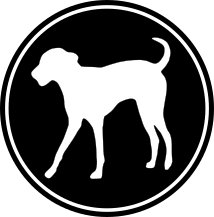One of the most difficult challenges in working with the Ecollar is working with a puppy. Puppies are the hardest because everything is new to them their distraction level is nothing one second and then at a peak the next. There’s very little in between. Everything is new to them. This makes it very difficult …
Each of the various behaviors (the recall, sit, down, place, etc.) that we train must be proofed. The basic proofing is similar for all of the behaviors; it just gets modified in its form slightly. You’ll need at least five dog toys. I use a tennis ball, a Kong, a K-9 Frisbee a large bumper …
This chapter assumes that you’ve already set the Ecollar on the dog’s “working level.” Throughout this section I say to use the “continuous button.” But if you’ve found that it’s too high for your dog and he needs repetitive use of the nick button or the tap mode, that’s what you’ll use. Tools for the …
The technique outlined below works well to stop a dog from chasing unwanted game, commonly known as “crittering” and for stopping dog to dog aggression. If you’re using it for the second purpose, just substitute a dog that your dog is aggressive towards for the prey animal. Where the references are made to “chasing game,” …
Before we start remember to look for signs that the dog is getting stressed by the training. If so, end on a success and continue later, after the dog has calmed down. Teaching the sit is usually the next step to getting the dog to be “collar literate.” That means that the dog understands that …
There are three general types of training with the Ecollar. The first is called “Escape Training.” Escape training occurs when the dog knows that it’s his action that makes the stimulation stop. He will perform faster and faster in order to make the stimulation stop because it’s uncomfortable. It’s in his own best interest to …
Gaining reliability The reason that dogs don’t obey all the time is that they are gamblers. “Let’s see if I can do what I wanna do THIS time!” I recommend this method to ensure reliability. BTW either a dog is reliable or he’s not. Reliability means 100%. My bottom line is that if the dog …
Some stress signs may be difficult to see, while others are very noticeable. Some signs relate to an increase in activity, as in acute stress – body and mind go into “red alert” status. Others relate to a decrease in activity or shutting down – in response to chronic stress. These differences are due to …
Why is leadership important? Dogs are social animals that live in a pack, or family. When you bring a dog into your family you become their pack. Even if you are a single person with one dog, you are a pack. It is extremely important for a dog to know where he stands in the …
Revised December 2011. An infrequent, puzzling phenomenon is the litter in which many, if not all, of the whelps become strangely deformed sometime in the first two weeks of life. A flattening of the thorax and abdomen, top to bottom, becomes evident about a week after birth from some unknown cause. It apparently happens most …
